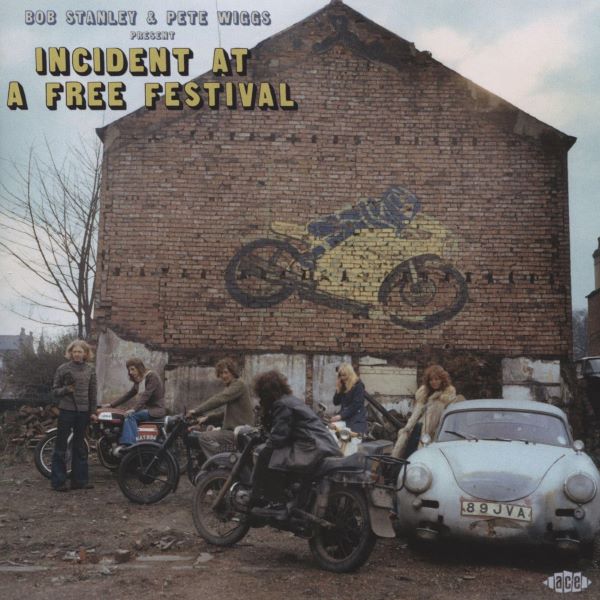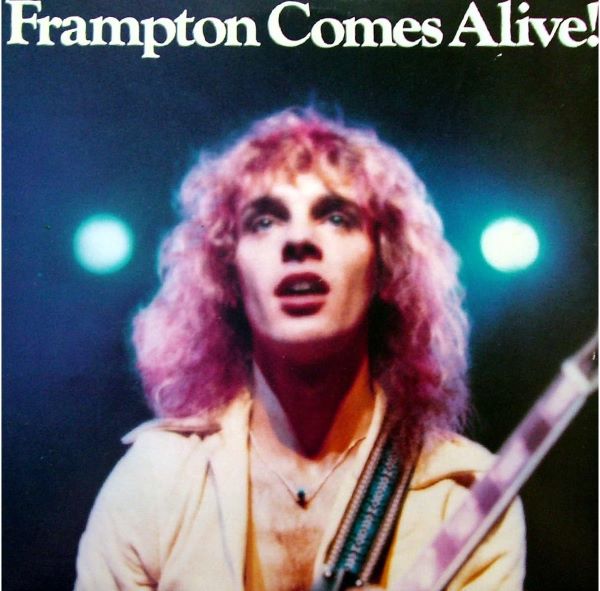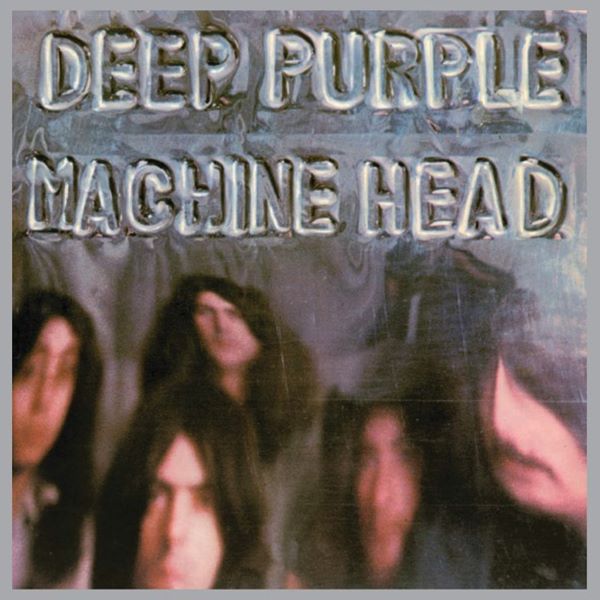
What's new
Walks by the sea
Fred Olsen's Cruise lines for 2025
Christmas books reviews
DVD reviews
Doctor Who
Our new website - Enjoy Britain online www.enjoybritainonline.co.uk/
New CD releases
Discover Knightsbridge, London
Birdwatching and more


Simon Evans reviews the pick of the latest CDs
 Bob Stanley and Pete Wiggs present Incident at a Free Festival
Bob Stanley and Pete Wiggs present Incident at a Free Festival
(Ace)
Together with Pete Wiggs, his bandmate in the retro-pop group Saint Etienne, pop historian Bob Stanley has curated a brilliant series of themed compilation albums, covering everything from the heatwave summer of 76 to the three-day week; unearthing records, both well-known and obscure, that perfectly sum up those particular moments in time.
This latest offering pinpoints the “thin world between the Aquarian late 60s and the early 70s glam takeover”, as Bob puts it in his sleevenotes. It more particularly celebrates the world of the early Seventies pop festival, especially “the mid-afternoon slots at Deeply Vale, Bickershaw, Krumlin, Weeley and Plumpton… that were rites of passage for thousands of kids. Bands lower down the bill would be charged with waking up the gentle hippies and appealing to both the greasy bikers and girls in knee-high boots who wanted to wiggle their hips.”
Many of the bands featured here were perfect for those muddy, rainy afternoons in Lancashire, Essex or Sussex, dealing, as they did, in “volume, riffs and heavy percussion”. The cast list ranges from festival favourites Pink Fairies, Hawkwind and The Edgar Broughton Band to the rather more obscure, but no less great, May Blitz, Andwella and Jonesy.
Barclay James Harvest’s atypical hard rocking Taking Some Time On also perfectly fits the bill as does Curved Air’s Back Street Love and Deep Purple’s Chasing Shadows, while Manfred Mann Chapter Three’s One Way Glass has, as Bob puts it, “a rainy early Seventies feel” perfectly in keeping with the rest of the 20 tracks.
Adding to the flavour of the time, Bob and Pete also include select items from the KPM music library used as background music for the kind of sexploitation films that portrayed rock festivals as bacchanalian love-ins. (The reality, of course, was very different, as anyone who sat through the Keef Hartley Band at 2am in a drizzly field in Lincolnshire would have told you). Which explains the presence here of the wonderfully titled Big Boobs Boogie. Different times.
 Peter Frampton - Frampton Comes Alive!
Peter Frampton - Frampton Comes Alive!
(A&M)
In 1976 Peter Frampton, formerly of The Herd and Humble Pie, appeared to be, at the age of just 25, all washed up. Since leaving Humble Pie in 1972 Frampton had released a series of pleasant but unremarkable solo albums that, while showcasing his undoubted gifts as a guitarist, singer and song-writer, seemed to lack focus. That all changed when Peter set out on tour in support of his most recent album Frampton, complete with his talkbox, the gizmo that looked like a life support system, made a strange quacking noise heard prominently on the single Show Me The Way, and became bafflingly popular for a few months in the mid-Seventies.
Long enough, certainly, for Frampton’s tour to be a big hit with audiences and so, albeit belatedly, his record company had the presence of mind to capture several shows on tape. Songs that had sounded limp in their studio versions seemed to take on a new immediacy and power in a live setting, although no one, least of all Frampton himself, could have imagined that the resulting double album Frampton Comes Alive!, when it was released in early 1976, would go on to become one of the biggest selling albums of all time.
It was one of those albums that was very much of its time, capturing a certain moment but not entirely able to transcend it, as Frampton’s post Comes Alive career demonstrated all too clearly.
The follow-up, I’m In You, was another big hit, but Peter was never again able to scale the heights of Frampton Comes Alive!, settling instead for a comfortable life of regular tours and albums, as well as turning up in his old pal David Bowie’s touring band for a few years.
Four years ago Peter announced a farewell tour following a diagnosis of a degenerative disease, but thankfully he is back with the aptly named Never EVER Say Never Tour and supervising this excellent new mix of the album he will always be remembered for.
 Deep Purple - Machine Head
Deep Purple - Machine Head
(Rhino)
Originally released in 1972, Machine Head would become Deep Purple’s most successful album, helped by the fact it included the band’s most celebrated song, Smoke On The Water. This was Deep Purple’s golden age; over the past two years they had released two big-selling albums, In Rock and Fireball, featuring an irresistible brand of sophisticated hard rock, and, along with Machine Head, those records would supply most of the tracks for the landmark Made in Japan live album, also released in 1972, and, indeed the band’s repertoire for the next 50 years and counting.
The recording of Machine Head was anything but easy, however; the Montreux Casino in Switzerland, where they had planned to record the album using the Rolling Stones mobile truck, burnt down when a fan fired a flare into the ceiling during a concert by Frank Zappa and the Mothers. The whole sorry tale was documented in Smoke On The Water, with the band forced to reconvene at the Montreux Grand Hotel, where Machine Head was recorded during a frantic two-week window in December 1971.
It seems strangely appropriate then that, for this super deluxe edition, Frank Zappa’s son Dweezil has gone some way to repaying the debt by remixing the album for CD and Blu-ray, giving the recordings an added sheen and muscularity in the process.
The set also includes two live concerts, a March 9 1972 London set originally released as Deep Purple In Concert, and a previously unreleased April 1971 show recorded at the Montreux Casino, just months before it burned down. (It was rebuilt and reopened in 1975).
 Brian Eno - Eno
Brian Eno - Eno
(UMC)
Having first attracted attention with his Martian-has-landed attire as part of the first (and most creative) iteration of Roxy Music, Brian Eno has enjoyed a remarkable career encompassing music, film, art and literature. As producer his illustrious clients have included U2, Talking Heads and Paul Simon, while his collaborations with Robert Fripp, David Byrne, John Cale and countless others have resulted in albums that range from the ground-breaking to the almost wilfully experimental. He also almost single-handedly invented the genre known as ambient, which would prove so influential during the Nineties dance music revival.
There is much to celebrate then in the new documentary Eno, a tantalising taster for which is provided with this soundtrack album. No collection, even a recent box set, could possibly do justice to the range of Eno’s work but this makes a pretty good fist of it, featuring collaborations with David Byrne, Cluster, Daniel Lanois and brother Roger, as well as Eno’s own wide-ranging solo work that ranges from mutant pop, celestial instrumentals and ambient atmospherics to gnarly electronica, sometimes within the same track.
Occasionally challenging, often engaging, but never less than interesting this is the perfect tribute to pop’s great polymath.
 Various Artists - Reimagining In The Court of the Crimson King
Various Artists - Reimagining In The Court of the Crimson King
(Cleopatra Records)
How can you reimagine an album as perfectly self-contained as King Crimson’s 1969 In The Court of the Crimson King? With some difficulty, as this well-intentioned mixed bag of an album attests. The problem is that In The Court of the Crimson King was born out of a particular set of young musicians during an era of remarkable hothouse creativity.
Robert Fripp’s most recent version of King Crimson largely sidestepped the problem by bringing imaginative new arrangements to bear on the material which, in all honesty, is the only way to proceed.
By cleaving so close to the original, for instance, Todd Rundgren’s take on 21st Century Schizoid Man, featured here, simply comes over as a rather more mannered copy of the original.
More successful, perhaps because more authentic, is I Talk To The Wind, a collaboration between Crimson alumni Mel Collins and Jakko Jakszyk that manages to fuse late Sixties dreaminess with an Eighties jazz swing (in a previous life Jakko was a member of Level 42). But the rest of the tracks desperately miss Greg Lake’s intense vocals; his rich choirboy-clear baritone, free of vibrato and other vocal tricks, is what these richly ornamented gothic poems need. In contrast the singers on Epitaph, Moonchild and the title track feel the need to impose their own character on the songs, with decidedly mixed results. Similarly, drummers Carmen Appice and Ian Paice bring a solid rock heft to proceedings but lack the intricate subtlety of Crimson’s extraordinary sticksman Michael Giles.
Guitarist Steve Hillage, a refugee from Seventies potheads Gong, is one of the only musicians from an admittedly accomplished throng, that also includes ex-Genesis drummer Chester Thompson and the fire god himself, Arthur Brown, who does not sound out of place here.
An interesting experiment then, that was, however, doomed to failure from the start. No one does Crimson like Crimson.
Spring 2025 Book Reviews
Spring 2025 DVDs
March 2025 book reviews
Winter 2025 CDs
Winter books 2025
Winter DVD's
Great Christmas Music Ideas
Christmas books - gift ideas
Autumn Reads
Summer 2024 Books
Summer DVDs
Summer CDs
Latest book reviews
May DVD Reviews
May's book reviews
That English Riviera Touch
April's DVD reviews
April's book reviews
April's CD reviews
March's DVD review
March book reviews
March's CD reviews
February's DVDs
February's books
Winter books
January's DVD releases
Christmas book reviews
November DVD reviews
November's Music Reviews
November book reviews
October's DVD reviews
October's New CD releases
October's book reviews
September's DVD Reviews
DVD selection for August 2023
September's book reviews
Latest music reviews August 2023
August Round up
August Paperback Reviews
August hardback book reviews
July 2023 Roundup
Pick of the paperbacks July 2023
July 23 Hardback book reviews
July 2023 DVD releases
July 2023 CD reviews
Pick of the paperbacks June 2023
June DVDs
Hardback book reviews - June 2023
Simon Evans CD Reviews for June 2023
Tesco Summer indoors and out
Book reviews
May 2023 paperback book reviews
May 2023 Hardback book reviews
May's DVD Selection
May's CD selection
Round up of April 2023's book reviews
April 2023 paperback reviews
April 2023 Hardback book reviews
More March 2023 must-reads
March - Pick of the paperbacks
March hardback recommendations
Afternoon Tea
March 2023 - DVD releases
March 2023 Music
February 2023 Books Round up
Pick of the paperbacks - February 2023
Book reviews February 2023
DVD recommendations
February's music reviews
Freedom on two wheels
Make do and mend
Foray into the Fens
Christmas reads
Tasty, healthy recipes by Joanne Wood
Keeping fit and healthy with the Green goddess Part 2
Keeping fit and healthy with the Green goddess Part 1
Finger-licking Good! Tasty Chicken recipes
Beauty: Say 'Allo 'Allo to an alluring look
British Library: Palace of the printed word
Look good and feel great with CBD
Interior design: Inspiration for outdoor spaces
Summer fun at Belvoir Castle
Finding Fitness Starts With Fashion
‘In Vogue’ Veg – Cavolo Nero Sales Grow by 14%
Eat Continental and live longer
A life-affirming book... about death
Get Sewing: Floral bespoke notebook cover
Find your family fortunes... for FREE!
Beauty: Get set for spring...
Spanish Recipes: Small is beautiful
The Vegan Revolution
Interior Design: Maximise your living space
Pets need a spring clean too
Visit Family Tree Live
MasterChef: Classic with a Twist
Get Sewing: Quilted pot-holder
Bob Dylan "Rock and Roll music wasn’t enough for me”
Plant Power Day: 7th March 2019
Interior Design: Less is more in minimalist home
A second chance at love
Interior Design: Great Gatsby Cabinet
The rise and rise of the birthday cake
Walking back to happiness
Baking With Veg
Totally Tina Tour
How to take care of your hair over-50
The nation's most popular cake recipes
Your views: Can you help?
Hail the grandparent aupairs
Beauty: Denise Welch "I love the shape I'm in at 60"
The Austerity Olympics
Healthy reasons to acquire a taste for olives
Grand Treats for Grandchildren
Declutter your home, and clear your mind
Scandi-style Mules for Swollen Feet
Beetroot and Walnut Cupcakes with Cream Cheese Frosting
In your garden: October
Dr Norman Croucher: The toughest summit of them all
Craft Corner: Sweet Easter Basket
Have your cake and eat your Easter egg too!
Interior Design: Moroccan inspired drawers
BR remembered... 70 years on
A gentleman's guide to spring fashion
Why antique jewellery is glittering
New Year, new beauty habits
Cliff Richard "I have a deeper faith now"
Do you remember? Oliver!
What we really look for in retirement living
Interior Design: Wedding bells on a budget
Counter culture: The revival of the board game
Jodie Whittaker: "Doctor Who is all about change"
85 year old Grandmother gains a PhD
Dame Eileen and a Crowning glory
Writing the story of you life
Why winter shouldn't stop you: don't wait until New Year
World' first 'wellness shed' stirs up mindfulness
Growing old is amazing
Don't miss out on the internet age
Prepare to feel ancient...
Hawks: Up close and personal
Studious retiree heads back to school
Garden Expert: Soaking up the sun
Emily Watson "I'ts such a gypsy life"
Here's to you Mrs Robinson
Brits Embracing 'Urban Birding'
Volunteering for Nature
The Secret to Younger Looking Eyes
Anti-ageing Options Part 2
Anti-ageing Options
End of the road for a pop icon
Reaching out to Dementia Sufferers: Sporting Memories Network
Are you ready for retirement?
Afternoon Tea Recipes
Surprisingly Good Wholegrain Recipes: Savoury
Staying safe in the Summer heat: Drowning prevention
Stardust Memories
Baking made easy
Cooking for one
The real cost of your wine

Walks by the sea
Fred Olsen's Cruise lines for 2025
Christmas books reviews
DVD reviews
Doctor Who
Our new website - Enjoy Britain online www.enjoybritainonline.co.uk/
New CD releases
Discover Knightsbridge, London
Birdwatching and more